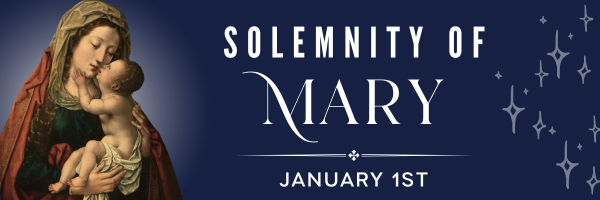 Dear readers, Catholic Online was de-platformed by Shopify for our pro-life beliefs. They shut down our Catholic Online, Catholic Online School, Prayer Candles, and Catholic Online Learning Resources essential faith tools serving over 1.4 million students and millions of families worldwide. Our founders, now in their 70's, just gave their entire life savings to protect this mission. But fewer than 2% of readers donate. If everyone gave just $5, the cost of a coffee, we could rebuild stronger and keep Catholic education free for all. Stand with us in faith. Thank you. Help Now >
Dear readers, Catholic Online was de-platformed by Shopify for our pro-life beliefs. They shut down our Catholic Online, Catholic Online School, Prayer Candles, and Catholic Online Learning Resources essential faith tools serving over 1.4 million students and millions of families worldwide. Our founders, now in their 70's, just gave their entire life savings to protect this mission. But fewer than 2% of readers donate. If everyone gave just $5, the cost of a coffee, we could rebuild stronger and keep Catholic education free for all. Stand with us in faith. Thank you. Help Now >
Water and Baptism in Salvation History - Including Our Own History
FREE Catholic Classes
The Baptism of Jesus, which we recall on Monday, January 9, 2012, gives us an opportunity to reflect on the meaning of Baptism and on the fascinating way that God uses water in His plan of salvation.
Highlights
Catholic Online (https://www.catholic.org)
1/9/2012 (1 decade ago)
Published in Living Faith
Keywords: Jesus, Baptism, Water, Salvation History, Michael Terheyden
P>KNOXVILLE, TN (Catholic Online) - Water is one of the most important and fascinating compounds in the universe. It exists as a vapor, liquid, or solid. Water makes up approximately seventy percent of the earth's surface. It also comprises about seventy percent of our body weight. It has carved out deep canyons and worn down great mountain ranges.
All life depends on water. We would die without it. Therefore, it is not surprising that God uses water to bring about His plan of salvation and communicate spiritual truth to us. Looking at water in the events of salvation history is fascinating, and it can help us understand the Church's teaching on Baptism.
Ancient people made associations with water based on its physical and chemical properties. One property of water is that it can dissolve other substances, making it useful for cleansing. This property is associated with the idea of renewal or new life (CCC 1215). This idea can be seen in Jewish law, which includes numerous washing rituals.
It is also evident in the story of Noah's ark. Sin was so rife in Noah's time that God cleansed the earth from its inhabitants by means of a great flood. Only Noah, his family, and the animals with them survived. God brought Noah and his family safely through the flood waters by means of the ark God instructed Noah to build. The story of Noah's ark is a sign of salvation and new life (CCC 1219).
The crossing of the Red Sea offers us insight into the truth about sin. The Jews were enslaved in Egypt. The institution of slavery in history is a sign of spiritual slavery. Scott Hahn describes spiritual slavery in terms of the psychology of sin in his book, Lord Have Mercy. Typically, if we remain in a sinful state, it becomes difficult for us to think clearly and choose rightly. The concrete, transitory objects of this world seem more real and desirable to us than spiritual realities, and we begin to substitute worldly pleasure for truth.
In time, we can become so addicted to the short-term worldly pleasures of our sin that we might do almost anything to satisfy our disordered desires. For instance, we may try to deny our sin, justify it, or make it into a good. If that does not work, we may blame and accuse others for our sins or exaggerate the faults of others. It seems the only thing we refuse to do is repent. Thus, we become slaves to our sin. The crossing of the Red Sea represents liberation from the slavery of sin (CCC 1221).
Forty years after the Jewish people had crossed the Red Sea, they stood at the banks of the Jordan River, ready to enter the land God had promised their ancestor Abraham. Approximately 640 years after Abraham received God's promise, Joshua led the Jewish people through the waters of the Jordan and into the promised land.
The crossing of the Jordan reminds us that Abraham's descendants had to pass through water before they could inherit God's gift (CCC 1222). Approximately 1354 years after the Jewish people crossed the Jordan River, we hear about another Joshua in the waters of the Jordan. We know Him as Jesus.
The Baptism of Jesus in the Jordan reminds us of the creation story in the first chapter of Genesis. We notice two significant events when Jesus is baptized. First, the Holy Spirit descends upon Jesus (Mt 3:16). This is reminiscent of a mighty wind (Spirit) that swept over the waters when the heavens and earth were first created.
Second, the Father proclaims Jesus as His favored one (Mt 3:17). This reminds us of God's proclamation in Genesis that creation is good. The Baptism of Jesus in the Jordan indicates that God's promise to Abraham's descendants had yet to be completely fulfilled. The similarities between Jesus' Baptism and Genesis indicate that Jesus is about to usher in a new creation, an eternal promise land (CCC 1224).
We can get an idea how Jesus is going to usher in the new creation if we take another look at water. Ancient people not only viewed water as a source of life, they also associated it with death. The sea is a deep, dark, and mysterious force. It can swallow up a person or a boat in seconds. In the Greek language, "to baptize" means to plunge or immerse (CCC 1214).
This means that Baptism can be understood as a kind of death. While the story of Noah's ark and the crossing of the Red Sea represent new life and liberation, they also represent death. And in Mark 10:38 and Luke 12:50, Jesus referred to His Passion and death as a baptism. This is symbolized when the soldier pierces Jesus with a lance, and water and blood flow from His side. Consequently, Baptism represents new life on the one hand and the mystery of the Cross and communion with Jesus' death on the other (CCC 1220).
These are some of the main accounts of water and Baptism in salvation history that the Church uses to discern the spiritual truth God is communicating to us. The Church knows that we are incomplete, and we cannot reach completion within the natural order or by our own power. We are in bondage to our lower nature and sin. Our only possible hope is in a savior, and we have one in Jesus.
In John 3:4-6, Jesus says that we need to be baptized with "water and spirit." In Matthew 28:19, Jesus says, "Baptize them in the name of the Father and of the Son and of the Holy Spirit. Teach them to carry out everything I have commanded you." Therefore, the Church teaches us that we must allow ourselves to be washed clean and become "a new creature" in Jesus (2 Cor 5:17).
In a certain sense, then, you could say that we have two choices in this present life. Our first choice is to accept God's grace, that is, the seed of God's life which is flooding the earth and renewing creation, be raised above the natural order, and allow Jesus to lead us through the Red Sea and across the Jordan and into the fullness of the promised land. Our second choice is to reject God's grace and be swallowed up by nature (Cf. Mk 16:16).
-----
Michael Terheyden was born into a Catholic family, but that is not why he is a Catholic. He is a Catholic because he believes that truth is real, that it is beautiful and good, and that the fullness of truth is in the Catholic Church. However, he knows that God's grace operating throughout his life is the main reason he is a Catholic. He is greatly blessed to share his faith and his life with his beautiful wife, Dorothy. They have four grown children and three grandchildren.
---
'Help Give every Student and Teacher FREE resources for a world-class Moral Catholic Education'
Copyright 2021 - Distributed by Catholic Online
Join the Movement
When you sign up below, you don't just join an email list - you're joining an entire movement for Free world class Catholic education.
An Urgent Message from Sister Sara – Please Watch
- Advent / Christmas
- 7 Morning Prayers
- Mysteries of the Rosary
- Litany of the Bl. Virgin Mary
- Popular Saints
- Popular Prayers
- Female Saints
- Saint Feast Days by Month
- Stations of the Cross
- St. Francis of Assisi
- St. Michael the Archangel
- The Apostles' Creed
- Unfailing Prayer to St. Anthony
- Pray the Rosary
![]()
Copyright 2026 Catholic Online. All materials contained on this site, whether written, audible or visual are the exclusive property of Catholic Online and are protected under U.S. and International copyright laws, © Copyright 2026 Catholic Online. Any unauthorized use, without prior written consent of Catholic Online is strictly forbidden and prohibited.
Catholic Online is a Project of Your Catholic Voice Foundation, a Not-for-Profit Corporation. Your Catholic Voice Foundation has been granted a recognition of tax exemption under Section 501(c)(3) of the Internal Revenue Code. Federal Tax Identification Number: 81-0596847. Your gift is tax-deductible as allowed by law.










